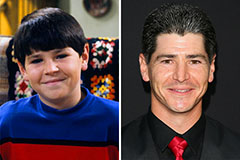The Of Chemie
Table of ContentsSome Known Incorrect Statements About Chemie 3 Easy Facts About Chemie ShownThe smart Trick of Chemie That Nobody is DiscussingOur Chemie StatementsSome Of ChemieChemie for Beginners
By Bojanna Shantheyanda, Sreya Dutta, Kevin Coscia and David SchiemerDynalene, Inc. Fluid cooling, which can be achieved utilizing indirect or direct methods, is used in electronic devices applications having thermal power densities that may exceed safe dissipation with air cooling. Indirect fluid cooling is where heat dissipating digital elements are literally divided from the fluid coolant, whereas in case of straight air conditioning, the elements are in straight contact with the coolant.In indirect air conditioning applications the electrical conductivity can be essential if there are leakages and/or spillage of the fluids onto the electronic devices. In the indirect air conditioning applications where water based liquids with deterioration preventions are typically made use of, the electrical conductivity of the liquid coolant generally depends on the ion concentration in the fluid stream.
The boost in the ion focus in a shut loophole liquid stream may happen due to ion leaching from metals and nonmetal parts that the coolant liquid touches with. Throughout procedure, the electrical conductivity of the fluid may increase to a degree which might be unsafe for the air conditioning system.
Our Chemie Diaries
(https://blogfreely.net/chemie999/dielectric-coolant-a-game-changer-in-heat-transfer-fluids)They are grain like polymers that can trading ions with ions in a service that it touches with. In today work, ion leaching tests were done with numerous metals and polymers in both ultrapure deionized (DI) water, i.e. water which is dealt with to the highest degree of pureness, and reduced electrical conductive ethylene glycol/water blend, with the measured change in conductivity reported with time.
The examples were allowed to equilibrate at area temperature for 2 days prior to videotaping the preliminary electrical conductivity. In all examinations reported in this research study liquid electric conductivity was measured to an accuracy of 1% using an Oakton disadvantage 510/CON 6 collection meter which was calibrated prior to each dimension.
Not known Details About Chemie
from the wall surface heating coils to the center of the heater. The PTFE sample containers were positioned in the heating system when constant state temperature levels were gotten to. The examination setup was gotten rid of from the heating system every 168 hours (7 days), cooled down to area temperature with the electrical conductivity of the liquid determined.
The electric conductivity of the fluid sample was kept an eye on for a total amount of 5000 hours (208 days). Number 2. Schematic of the indirect closed loop cooling down experiment set up - dielectric coolant. Table 1. Components made use of in the indirect closed loophole cooling experiment that touch with the liquid coolant. A schematic of the experimental setup is revealed in Number 2.

Getting My Chemie To Work
The change in fluid electric conductivity was kept track of for 136 hours. The fluid from the system was collected and stored.

0.1 g of Dowex material was contributed to 100g of liquid examples that was absorbed a different container. The combination was stirred and transform in the electrical conductivity at space temperature was measured every hour. The determined change in the electrical conductivity of the UP-H2O and EG-LC examination liquids having polymer or metal when immersed for 5,000 hours at 80C is revealed Number 3.
Our Chemie Statements
Figure 3. Ion seeping experiment: Measured adjustment in electrical conductivity of water and EG-LC coolants containing either polymer or steel samples when immersed for 5,000 hours at 80C. The outcomes show that steels added less ions right into the liquids than plastics in both UP-H2O and EG-LC based coolants. This might be because of a thin steel oxide layer which may act as an obstacle to ion leaching and cationic diffusion.
Liquids including polypropylene and HDPE exhibited the lowest electric conductivity adjustments. This can be as a result of the brief, rigid, direct chains which are less likely to contribute ions than longer branched chains with weak intermolecular forces. Silicone additionally performed well in both test fluids, as polysiloxanes are generally chemically inert why not try these out due to the high bond energy of the silicon-oxygen bond which would certainly avoid destruction of the product right into the liquid.
Chemie for Beginners
It would certainly be expected that PVC would produce similar outcomes to those of PTFE and HDPE based on the comparable chemical structures of the materials, however there may be other impurities present in the PVC, such as plasticizers, that might impact the electric conductivity of the fluid - heat transfer fluid. In addition, chloride teams in PVC can additionally leach right into the examination fluid and can create an increase in electric conductivity
Polyurethane totally broke down into the test fluid by the end of 5000 hour test. Prior to and after pictures of metal and polymer examples submersed for 5,000 hours at 80C in the ion leaching experiment.
Measured change in the electric conductivity of UP-H2O coolant as a function of time with and without resin cartridge in the shut indirect air conditioning loop experiment. The gauged change in electric conductivity of the UP-H2O for 136 hours with and without ion exchange material in the loop is shown in Number 5.
 Tia Carrere Then & Now!
Tia Carrere Then & Now! Michael Fishman Then & Now!
Michael Fishman Then & Now! Robbie Rist Then & Now!
Robbie Rist Then & Now! Tyra Banks Then & Now!
Tyra Banks Then & Now! Dolly Parton Then & Now!
Dolly Parton Then & Now!